Along with cold lake effect winds and the most hectic quarter of the year, winter brings the perfect excuse to make and eat warm, hearty foods that seem too heavy during other seasons. However, satisfying your winter cravings doesn’t mean you have to cook solely with meat and potatoes. There’s room to add fresh produce to your diet during every season, and apples are an ideal fruit to incorporate into wintertime meals. Apples are one of the fruits that can be found locally and seasonally in the Midwest during this time of year. They’re not just great in warming cider and pies, but also in sandwiches and salads. There are many varieties of apples, each with a unique flavor, so figuring out which one to toss in your backpack for a snack or which one to slice into a pie can be tricky. If you’re wondering what’s the difference between those seemingly identical fruits, look no further than this guide for a breakdown of the flavors of several apple varieties and some advice on which varieties work best for different cooking and baking purposes.
Braeburns have a reddish-pink color and a taste that is mostly sweet with just a touch of tartness. They also boast a kick of spicy nuttiness similar to nutmeg.
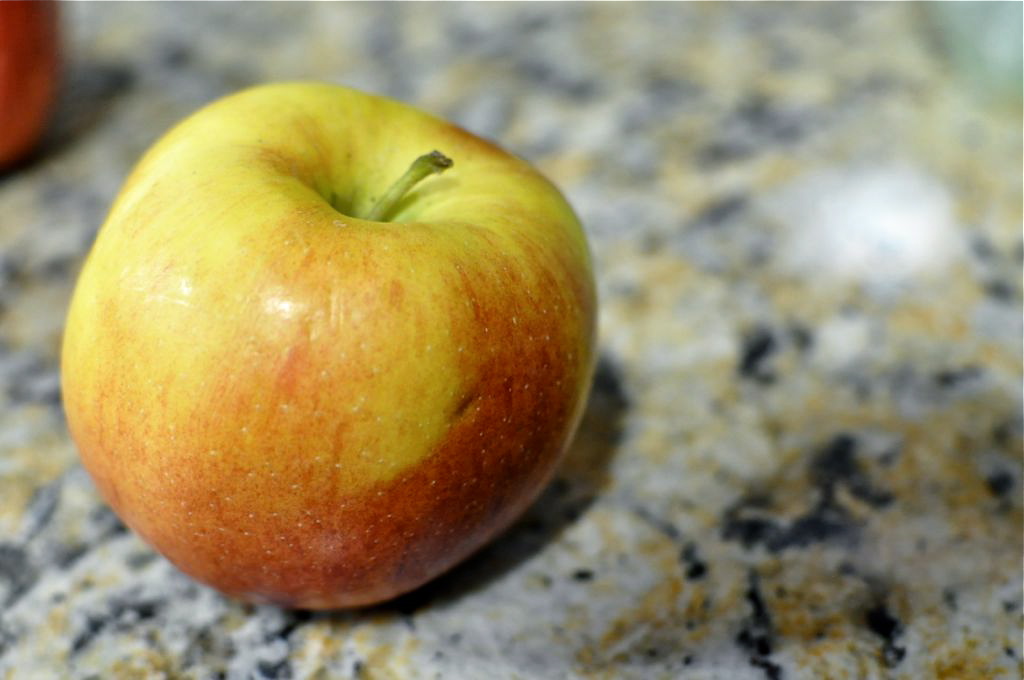
Braeburn apple. Photo by Lily Allen
Honeycrisp apples are red with a hint of green coloring and have a crisp (hence the name), fruity, yet slightly tart flavor. They also last longer that other apples if they get left sitting out on a counter, so they’re a great choice if you share a fridge with limited space.
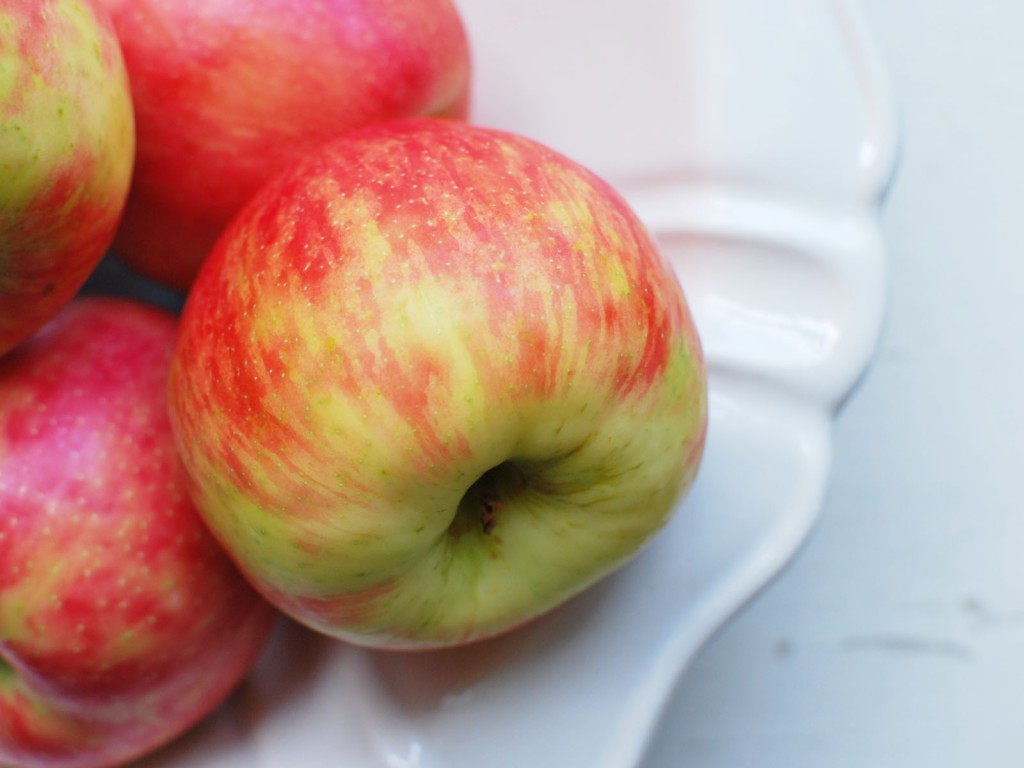
Honeycrisp apples. Photo courtesy of honeysucklelife.com
Granny Smith apples have a deep green color, with an occasional hint of pink. These apples have a potent tartness that many Granny Smith lovers consider extremely refreshing. Granny’s also have “russeting” which is browning around the stem, so don’t be alarmed if you spot this normal discoloration.
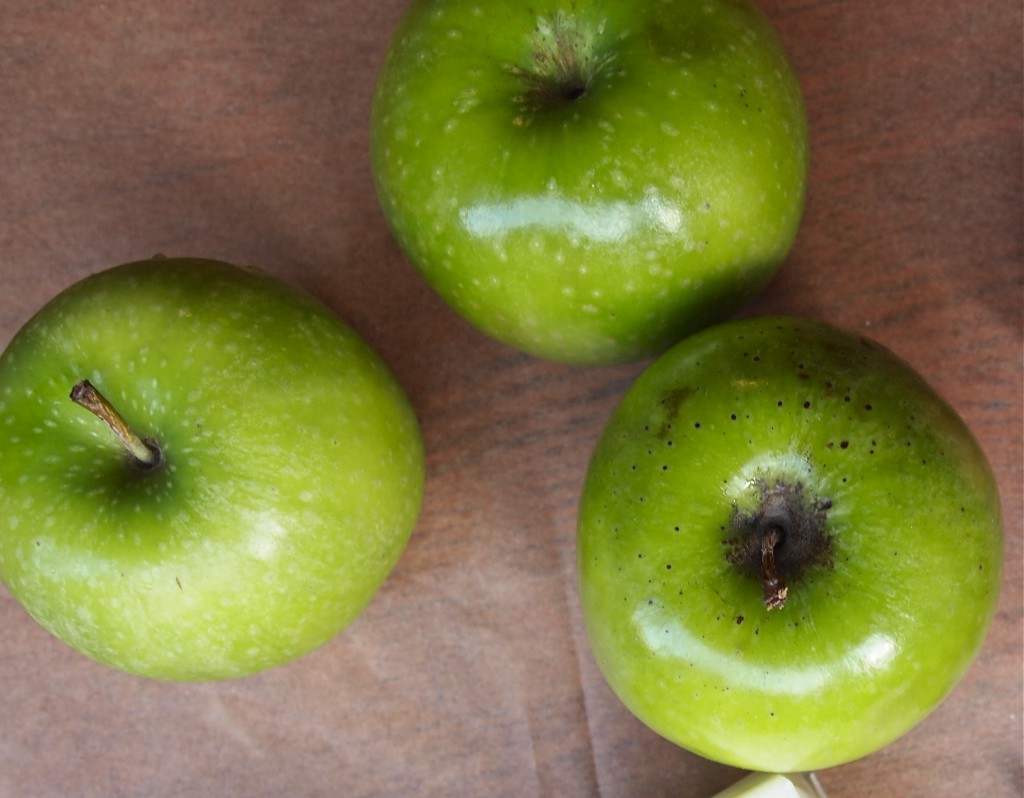
The russeting, or browning around the stem, on granny smith apples. Photo by Kendra Valkema
Fuji apples have around 15 to 18 percent sugar, making them the sweetest apple you can pick. They are usually larger than other apples in size and shape, and they have a long shelf life of around 5-6 months when refrigerated. Fuji apples have a pale yellow skin color with reddish-pinkish stripes streaked across. They are round, firm and incredibly juicy.
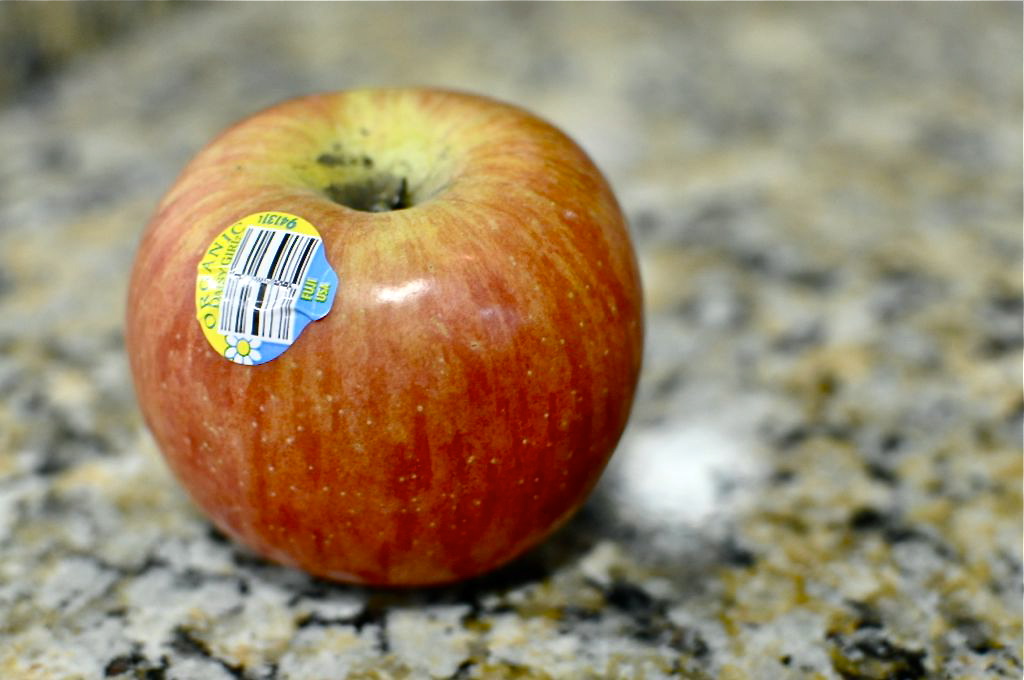
Fuji apple. Photo by Lily Allen
Gala apples have a yellow color background with red stripes, similar to Fuji apples. But make sure not to mix them up by skimming the labels! Gala apples are only mildly sweet compared to Fuji apples, and they have vanilla notes in their flavor.

Gala apple. Photo by Lily Allen
Best Apples for Baked Goods
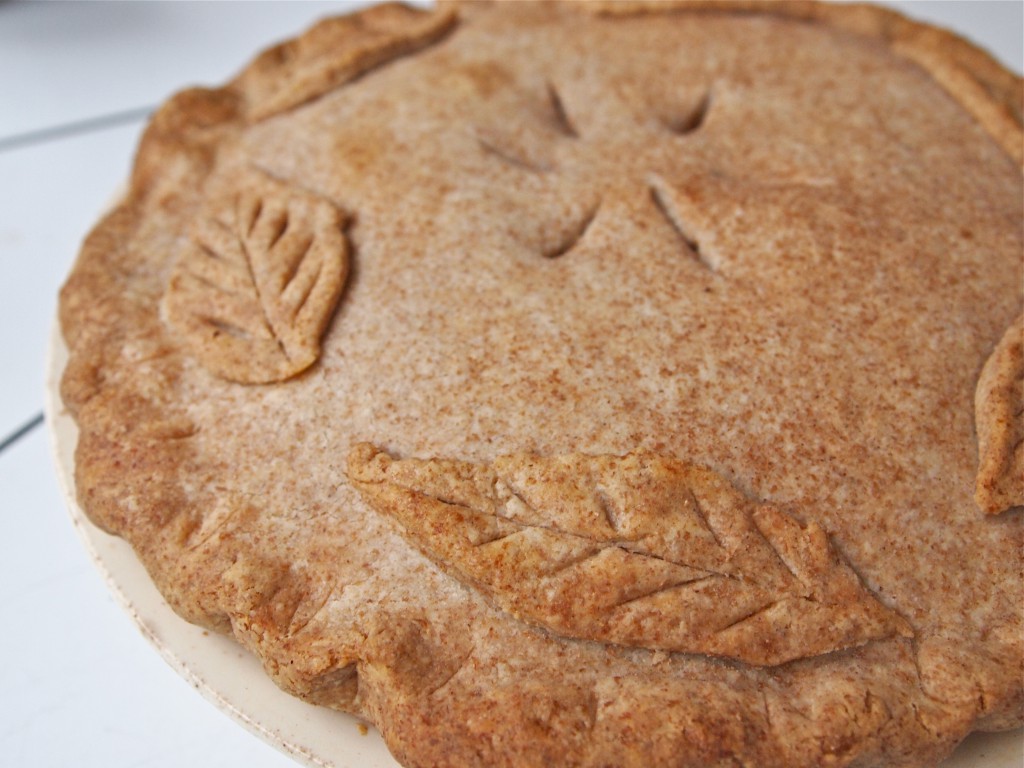
Photo by Kendra Valkema
- Braeburn’s fruity, yet spicy, flavor complements an apple pie, cobbler or tart, and its firm texture makes the baking process a mess-free cinch. Try baking an apple and topping it with a bit of vanilla ice cream and cinnamon for a delicious and easy end to a meal.
- Honeycrisps have a perfect balance of sweetness and tartness, and their crispy flesh makes a wonderful filling for an apple pie.
Best Apples for Salads and Sandwiches
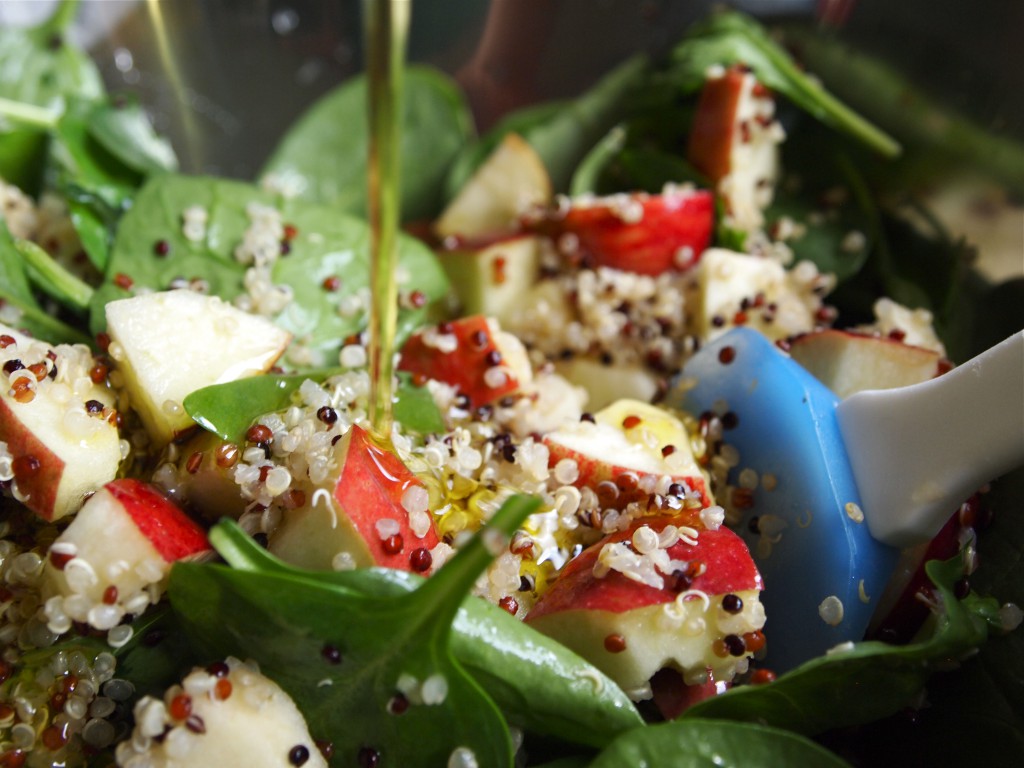
Photo by Kendra Valkema
- Fuji’s crispy skin and sweet flavor is intoxicating when paired with tuna or chicken for a sandwich. For an easy chicken salad, mix together chicken, apple, dried cranberries, and a dash of mayo.
- Granny Smith is the apple of choice for salads because they don’t brown as quickly as other apples once they’re cut. Test them out by tossing together some albacore tuna, apple slices, goat cheese and almonds on a bed of baby spinach. Instead of brown, soft apples, you’ll be enjoying fresh and crispy slices well into your last bite.
Best Apple to Dunk and Coat
- Granny Smith’s extra tart flavor helps balance out the sweetness of sweet dipping sauces. Melt some caramel and top with peanuts for a juicy caramel apple. Or, for a party, whip up a chocolate fondue and cut up some apple slices to serve.
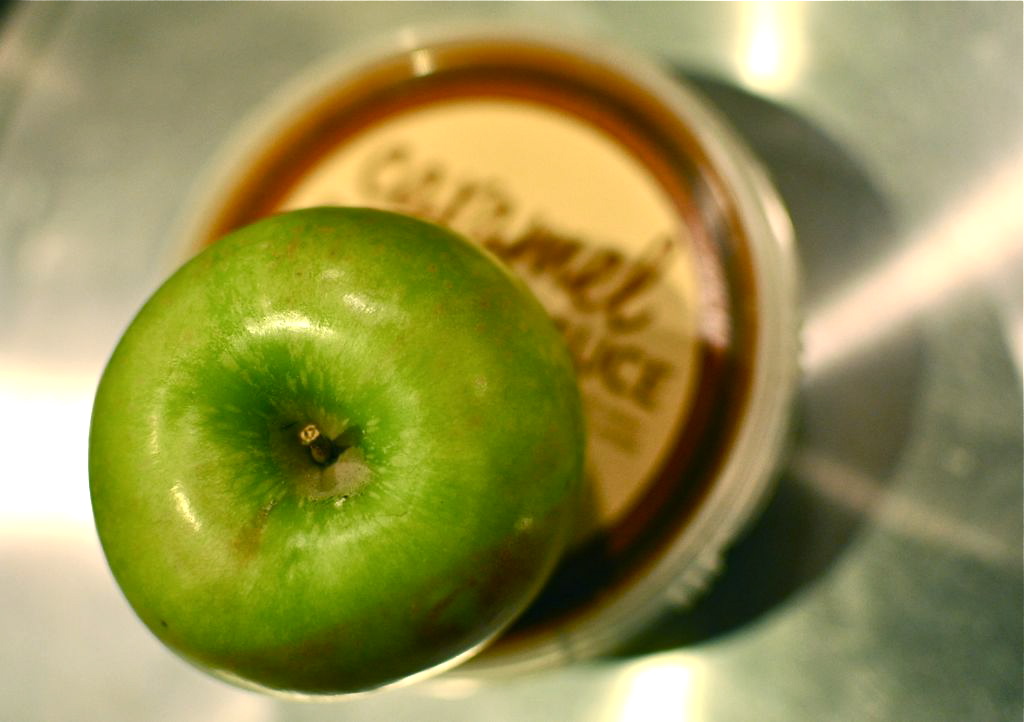
Photo by Lily Allen
Best Apple to Juice
- Fuji’s extreme sweetness make them ideal for cool squeezed juices and hot apple ciders alike. Make sure to taste the juice before adding extra sugar since the natural sweetness of the Fuji apples may already be sweet enough.
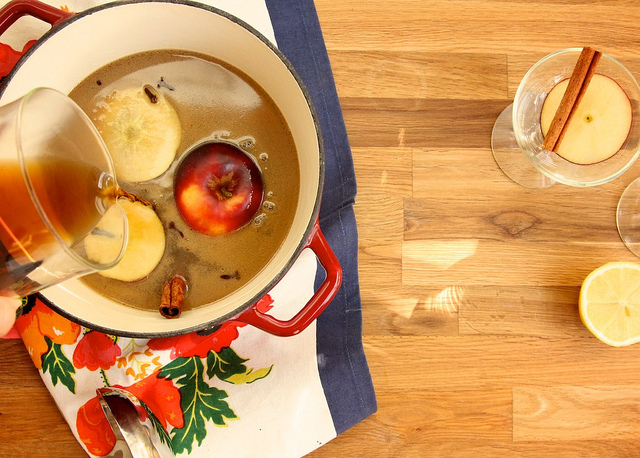
Photo courtesy of joythebaker.com
Best Apple for Applesauce
- Gala’s mild sweetness is ideal for an applesauce to accompany meats, such as chicken or pork, or to be eaten plain. If a sauce is too sweet, it’s less likely to work well with the meaty flavors of a main dish.

Photo courtesy of cookingwithdrew.com
Tips on Buying and Storing Apples
When searching for apples to add to a dish, search for a sale! Grocery stores almost always have at least one variety on sale, and buying a few pounds of cheap (yet quality) apples can be an affordable way to add this fruit to your wintertime diet. Make sure to choose only colorful, smooth and firm apples and avoid those with bruises, dark spots and a mushy texture. To test out the freshness of an apple, try rubbing your fingers across the apple: if the skin wrinkles, it’s no good. Though apples are fine kept on the counter for a couple days, try to store apples in your refrigerator drawers to keep them crisp and fresh for several weeks.

